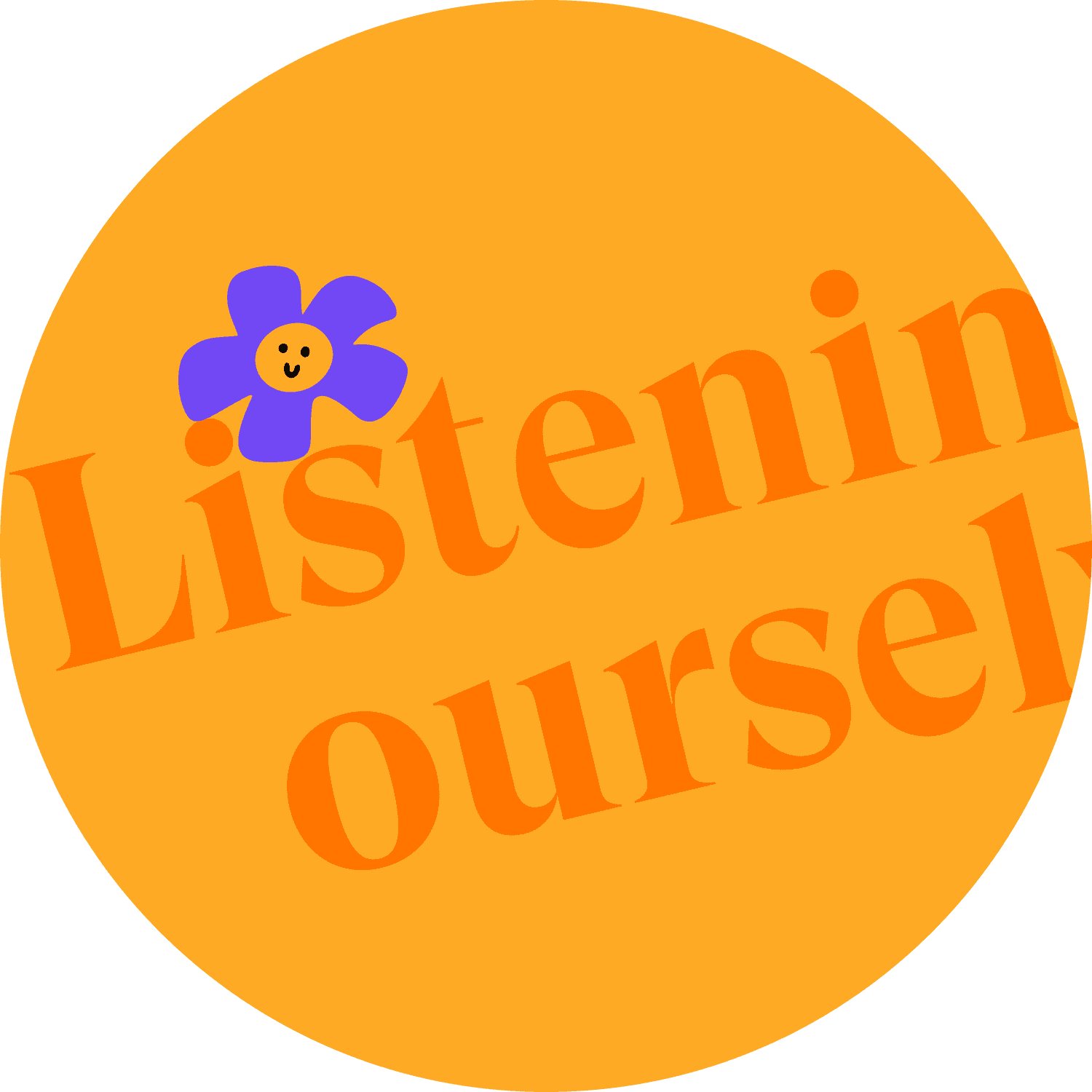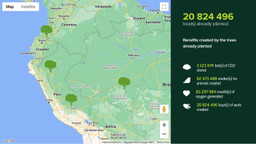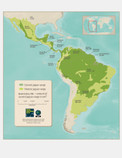
Earth.fm doesn’t only host an ever-increasing archive of recordings; it is also a platform for raising funds for charities all over the world.
Working to conserve the natural world in regions where diverse ecosystems generate the most beautiful, breath-taking, and distinctive soundscapes, these organizations all avoid oversimplified goals (instead taking whole landscapes and ecosystems into consideration), and adhere to the following principles:
- Collaborating with communities which have deep knowledge of local context
- Minimizing overhead costs and bureaucracy
- Using science-based methodologies
- Being easy-going and transparent
- Not viewing nature as a machine.
This article runs through the organizations currently supported by Earth.fm whose work includes projects based in Brazil. All of these charities were chosen for inclusion on the site by contributing soundscape recordists.
The seventh most populous and fifth-largest country on the planet, Brazil takes up around half of the continent of South America. Due to its geographical diversity, and the amount of the Amazon rainforest which falls within its borders (60%), the country is ranked as the most megadiverse on Earth by US environmental organization Conservation International – that is, those nations in which the majority of the planet’s flora and fauna are found.
It is hard to overstate the enormity and significance of the Amazon region.
The Amazon river is the largest in the world:
- Though its exact length is disputed, it is one of the two longest on Earth (in competition with the Nile)
- Its average annual discharge totals more than that of the next seven largest independent rivers combined
- At its mouth, the main channel alone is around about 9.3 miles (15 km) wide
- Its depth reaches 100 m (330 ft) in places
- Annual flooding, driven by heavy seasonal rainfall, causes 250,000 km² of the Amazon floodplain to be covered by water up to as much as 12.4 miles (20 km) from the river banks (forming “the most extensive system of riverine flooded forests on Earth”), and may rise between 24.6 and 46 ft (7.5 and 15 m).
The river’s drainage basin is the largest in the world, covering around 2,400,000 sq mi (6,300,000 km²); about two-thirds the size of the contiguous USA.
The Amazon rainforest is the largest in the world. Its astonishing, irreplaceable biodiversity and its impacts on weather systems makes its endangerment hugely concerning.
Human settlement and land development is the biggest cause of deforestation in the region; approximately 17% of the rainforest had been destroyed by 2018, with deforested areas being so considerable that they are visible from space. “Negative synergies between deforestation, climate change, and widespread use of fire indicate a tipping point for the Amazon system to flip to non-forest ecosystems in eastern, southern and central Amazonia at 20-25% deforestation.” Recent droughts and severe floods “suggest that the whole system is oscillating”, possibly representing “the first flickers of this ecological tipping point”. If this tipping point is passed, the detrimental effect on the hydrological cycle of the Amazon, which “is fundamental to human well-being in Brazil and adjacent South America”, will be substantial.
Deforestation in the Brazilian Amazon reduced significantly in the period 2004-2014, but has now increased, likely due to the efforts of outgoing president Jair Bolsonaro, who “supported the relaxation of regulations placed on agricultural land […] [and] used his time in office to allow for more deforestation and more exploitation of the Amazon’s rich natural resources.” This exploitation includes oil drilling operations, which by opening new roads through the forests often drives further deforestation.
In addition to deforestation in Brazil’s Amazon soaring “22% in the past year [2021] to the highest level since 2006”, around 412 dams are in operation in the Amazon’s tributary rivers, with additional projects in progress and hundreds further planned (funded in part by the Inter-American Development Bank, World Bank, and various Chinese banks and companies). “The negative effects of environmental degradation, sedimentation, navigation and flood control caused by the Three Gorges Dam in the Yangtze River” is causing concern that similar effects on the Amazon will lead to similar damage to its biodiversity “by blocking fish-spawning runs, reducing the flow of vital soil nutrients, and clearing forests. Reservoirs behind the dams also could displace indigenous people” and the resources upon which they rely.
“Most of the decisions being made are essentially heedless or unaware of that bigger picture”, according to Amazon biodiversity expert Thomas Lovejoy; the plentiful nature of hydropower means that it is perceived as cheap despite its potentially catastrophic costs for Amazonian eco- and hydrological systems. For example, dams on the headwaters of Amazonian rivers will “block the flow of important sediment”, which “provides essential nutrients to ecosystems”. Dams could also dry out wetlands upstream, devastating crucial spawning habitats for fish, affecting “not just the biodiversity of rivers, but also the diet and livelihoods of people who depend on fish for protein and income”.
Due to their requirement for roads to be opened up, developments such as these “attract land speculators, farmers, ranchers, drug crop growers, and wildcat gold miners”, setting off a “cascade of climate impacts”.
These examples only scratch the surface of the threats facing Brazil’s natural habitats, and the breadth of their ensuing impacts. The following environmental organizations are doing crucial work in the region, in opposition to prevailingly destructive trends driven in part by international demand for beef and soy.
The Frankfurt Zoological Society
Around 1,280 staff members work for Frankfurt Zoological Society projects across 18 countries, assisting national parks and wildernesses, and offering long-term, bureaucracy-free support to partners such as “local communities, conservation authorities, national park administrations, and other NGOs”. The FZS was established in 1858, and its dual primary goals are “to preserve biodiversity worldwide, and to promote Frankfurt Zoo”.
Its work in Brazil centers on the Cantão ecosystem, supporting local non-government organization Instituto Araguaia. This region, where the Araguaia and Javaés rivers converge, is an ecotone: a region of transition between distinct biological communities – in this case, the intersection of the Amazon, Pantanal (grass- and wetlands), and Cerrado (tropical savannah).

“About 90% of the Cantão ecosystem is protected in the Cantão State Park which forms part of a mosaic of different conservation areas covering more than two million hectares [4,900,000 acres]”, forming a buffer which protects against the spread of intensive agriculture from the south and east.
This area “consists primarily of floodplain forest which is underwater for half of the year”: a home for water birds, turtles, a huge range of freshwater fish, and larger aquatic species such as the freshwater pink dolphin, the 5.9 ft (1.8 m) long giant otter, and the black caiman, while plentiful terrestrial species include the jaguar. The FZS:
- Monitors many of these species
- Controls “access to the core of the Cantão State Park”
- Supports park management and rangers, while mounting regular patrols to deter poachers
- Monitors and fights fires and supports firefighters
- Organizes outreach in the form of an annual Cantão Canoe and Ecology Festival; gives presentations about the area to schools, fishing associations, and community groups; and hosts and guides visitors including scientists, students, and government officials.
Donate here.
Eden Reforestation Projects
Taking a bottom-up approach by establishing relationships with community leaders who are keen to protect and nurture local natural environments, ERP is able to help “communities to restore forests on a massive scale, thereby creating jobs, protecting ecosystems”, and therefore alleviate climate change. Putting communities at the center of the organization’s practice generates long-term commitment to the reforestation process on the part of local people, something fired by the sense of ownership which ERP allows them to feel.

ERP provides opportunities for communities to become economically self-sustaining, and its simplicity means that it is reproducible even by those with limited resources. So far, employees numbering nearly 15,000 have been fairly paid to produce, plant, and protect upwards of 977 million trees – nearly one million per day – across 10 countries, with expertise shared across these sites applied flexibly to accommodate any challenges.
ERP has endeavored to see these communities transformed in a holistic way. By providing economic incentives and sharing planting techniques, “communities have gone from living under oppressive indentured servitude in degraded areas to receiving a living wage working to restore their local environment”. Reliable employment means that parents are able to put healthy food on the table and pay their children’s school fees, while economically beneficial micro-enterprises emerge, and debts can be paid off.
The employment opportunities provided by ERP has allowed Eliene Riberio, a nursery manager in Cavalcante, Brazil, to study environmental management in order to expand her role “and have a greater impact on the local environment and her community”. Meanwhile, the wages of other members have enabled them to purchase bicycles, washing machines, and even land, and to erect fences around their homes.
Donate here.
The Amazon Conservation Team
By collaborating with Indigenous and other local communities and co-creating “new methods of conservation that honor the interdependent relationship of the forest and its peoples”, the Amazon Conservation Team aims to protect both, while promoting their harmonious co-existence and strengthening traditional culture.

Co-founder and executive vice president Liliana Madrigal remembers how “conventional conservation efforts tried to preserve ecosystems by effectively walling them off from local inhabitants”, and that the conservation organizations she and her husband were previously employed by “were drifting away from their missions.
“Management had become more corporate. Field projects were going unfunded while lavish amounts of money were spent on high-profile events. The bureaucratic ‘planning meetings’ were like hamster wheels that generated mounds of paper but little else. We felt our values and integrity compromised as participants in this ‘green’ machine.”
Walking away from this corporatized world eventually led to the couple founding the ACT, with a conviction to “work with indigenous communities; […] rely on traditional knowledge and elders to guide our decisions; […] make the fight for ancestral land rights central to our work […] [and] accept donations only from sources whose values aligned with our ideals”.
These values are backed up by the ACT’s commitment to apply “at least 80% of our annual spending to program services”, with the rest covering administrative costs and fundraising, and by independent nonprofit evaluation service Charity Navigator rating the organization 97 out of 100.
Twenty-five years after it was founded, the ACT has worked throughout that period in “close consultation with our partner communities, particularly the elders, who have defined our priorities in the fight for ancestral land rights and protection”. This has led to a holistic approach that also takes into account livelihoods in local communities, and draws upon traditional cultural knowledge and systems. In Brazil, this approach has led to:
- The approximately 4.5 million hectare (10 million acre) Tumucumaque Indigenous Reserve being mapped in collaboration with Indigenous communities, followed by similar efforts in the Xingu and half-million acre (approximately 202,000 ha) Sete de Setembro Surui indigenous reserves
- The first Indigenous-led carbon credit project in Brazil
- A ranger training and certification course for Indigenous people, the first of its kind in Brazil, in the Tumucumaque Indigenous Reserve
- Support for grassroots organizations fighting uncontrolled burning in parts of Bolivia and Brazil during the unprecedented fires which afflicted the Amazon region in 2019
- The Shamans and Apprentices Program, which aims to share shamans’ knowledge with younger generations, to avoid “the loss of traditional knowledge [which] culturally impoverishes the community” when shamans pass away without having a protégé.
As the organization points out, “As the Amazon continues to be destroyed, its indigenous guardians are the last line of defense. 25 years of on-the-ground work has led to many important victories, but there is still much to be done.”
Donate here.
Reforest’Action
French company Reforest’Action was founded in 2010 and has made good on its mission statement – “to preserve, restore and create forests around the world in order to develop their multiple environmental, social and economic benefits” – by using its ‘crowdplanting’ model to fund the planting of over 23 million trees in 42 countries.
As Stéphane Hallaire, the company’s founder and president, has put it, “It’s not just about planting tree shoots. It’s a much more complex know-how that requires an approach adapted to each terroir, each landscape, each valley on the planet, taking into account its biodiversity and the culture of the local population.”
That know-how comes from a variety of sources, which feed Reforest’Action’s even grander ongoing ambitions to help develop new, sustainable societal models to counter biodiversity loss and the climate emergency.
Reforest’Action’s desire to “strive for continuous improvement and [its conviction] that progress is made along the way” is reflected by its status as a B Corp company – that is, one “verified by [the non-profit network] B Lab to meet high standards of social and environmental performance, transparency, and accountability” – while, since 2020, its projects have been certified by independent control body Ecocert Environnement.
In South America, Reforest’Action funds projects which aim to restore deforested sections of the Amazon rainforest and other forests, in order to oppose desertification, “and to develop agroforestry among local communities”. In Brazil, this commitment takes the form of the development of edible forests within the Amazon rainforest. Due to industrial agriculture, the country, which is “the world’s largest soya producer, has converted 18% of its forest ecosystems since 1970 […] into cattle breeding, soya and oil palm crops”. In the state of Rondônia (the fourth most affected by deforestation in the Amazon), this project has been developed to reduce deforestation through agroforestry and the restoration of degraded forests.

Local populations typically employ the technique of slash-and-burn farming; though this fertilizes the soil temporarily, it will soon be exhausted, meaning the plot must be abandoned, creating “a circle of endless deforestation”. By planting 120,000 local species of fruit trees (such as cupuaçu, açaí, and peach palm), Reforest’Action will promote agroforestry by demonstrating its potential for great and more sustainable income, and “diversify forest fruit production, [to] ensure food and nutritional security for local populations, and store carbon to fight climate change”. Benefits of this model include carbon storage; biodiversity conservation; water cycle improvement; “generation of additional income for local populations”; and increases in food security.
Donate here.
Wildlife Conservation Society
Established in 1895 as the New York Zoological Society, this worldwide conservation organization’s long history has led to its current position managing hundreds of conservation projects across almost 60 countries, from Afghan mountains to the Chilean archipelago of Tierra del Fuego. To guarantee these projects’ protection, the WCS collaborates with bodies which range from local and Indigenous communities to government agencies, intergovernmental organizations, nongovernmental organizations, multilateral entities such as the United Nations, other conservation organizations of all sizes, and the private and philanthropic sectors.

The rate of human population growth is declining on most continents and is projected to stabilize over the next hundred years (partly due to the effect of increasing education and empowerment of women). The WCS sees this trend as a potential catalyst “for a renaissance of nature”. In order to enable this possibility to become a reality, the organization supports various countries to enact the UN General Assembly’s Sustainable Development Goals, the Convention on Biological Diversity, and the Convention on International Trade in Endangered Species of Wild Fauna and Flora (CITES).
The WCS’s non-profit Brazil Program, founded in 2003, is focused on the conservation of the Amazon region and the Pantanal, by developing science-based but community-driven solutions for the benefit of landscapes, wildlife, and human populations. Specific projects include providing protections for:

- White-lipped and collared peccaries (pig-like hoofed mammals which play an “important ecological role as environmental engineers” and as prey for big cats) by working “with landowners to promote sustainable ranch management practices that are profitable alternatives to deforestation and habitat conversion”
- Jaguars, an apex predator ‘landscape species’ (ie, one which requires “huge areas to survive”), whose own behavior “directly affect[s] the behavior and abundance of hundreds of [other] species”, but which has been extirpated (made locally extinct) across much of its historic range. WCS intends to launch projects “aimed at understanding and improving the interactions among jaguars and local human communities”, and establishing “a network of wild core-reserves for the upper Paraná Region of the Brazilian Atlantic Forest”
- Five species of Amazonian river turtles, whose eggs and meat are illegally traded because they form “a traditional source of protein for forest communities”. Turtles are “among the most threatened of vertebrates” worldwide, despite being “responsible for various ecological processes such as seed dispersal”, predating and being preyed upon, and acting as rivers’ ‘cleaners’. Projects include education of local populations about “the risks the turtles face if levels of over consumption continue”, and continued management of nesting beaches.
Other initiatives include:
- The Amazon Waters project, which “recognizes the value of fisheries, wildlife, and their aquatic habitats in the western Amazon and the need to manage these resources sustainably and contribute to the quality of life of local people”, from “community scale to the scale of entire hydrological basins”.
- The Birds of Brazil Project, which aims to leverage the variety of birds in the country (second only to Colombia worldwide), birds’ status as “a stimulus for nature preservation”, and the benefits of birdwatchers as “major disseminators of environmental protection”. In order to promote interest in bird species and their environments, to stimulate birdwatching tourism, “community participation in actions of bird and environmental protection”, and to “support private and governmental initiatives in environmental education and bird protection”, the Project has published a Field Guide to the species of the various biomes in Brazil.
- Local Livelihood, through which WCS-Brazil seeks to understand the links between local jobs and biodiversity and ecosystem change, and to support “activities that provide long-term, sustainable benefits to both local livelihoods and biodiversity”, including increasing incentives for those who conserve natural resources; “the meaningful and equitable involvement” of those, including Indigenous people, who may find themselves affected by conservation activities; and expanding rural communities’ ability to utilize and manage natural resources in sustainable ways.
Donate here.
Thank you for your interest in conservation, rewilding, protecting biodiversity, and other environmental protection projects!
We’re always interested in hearing about additional projects and organizations taking practical steps towards healing our planet – please feel free to share any details with us!
Earth.fm is a completely free streaming service of 1000+ nature sounds from around the world, offering natural soundscapes and guided meditations for people who wish to listen to nature, relax, and become more connected. Launched in 2022, Earth.fm is a non-profit and a 1% for the Planet Environmental Partner.
Check out our recordings of nature ambience from sound recordists and artists spanning the globe, our thematic playlists of immersive soundscapes and our Wind Is the Original Radio podcast.
You can join the Earth.fm family by signing up for our newsletter of weekly inspiration for your precious ears, or become a member to enjoy the extra Earth.fm features and goodies and support us on our mission.
Subscription fees contribute to growing our library of authentic nature sounds, research into topics like noise pollution and the connection between nature and mental wellbeing, as well as funding grants that support emerging nature sound recordists from underprivileged communities.

